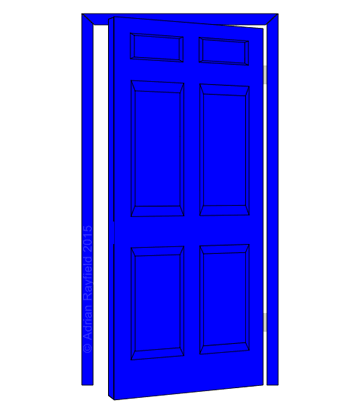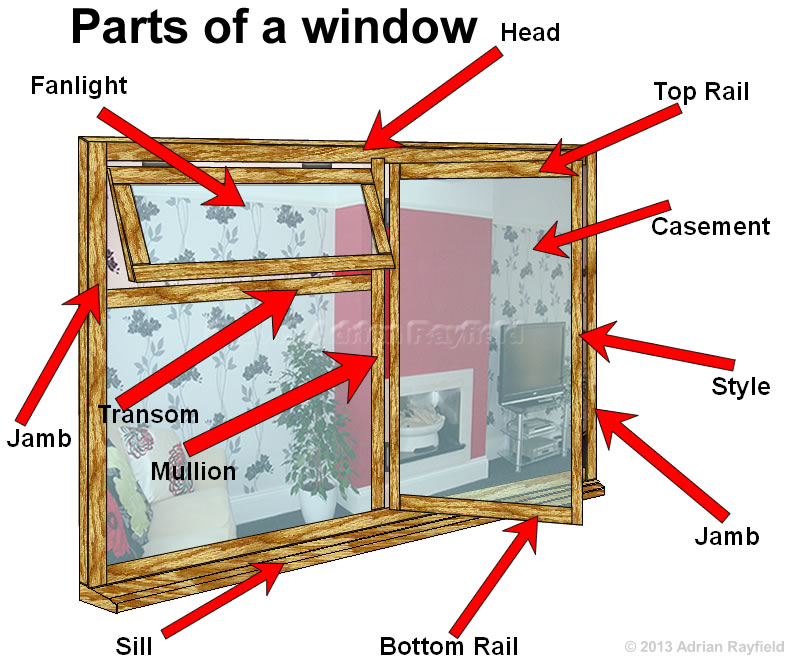Painting, decorating and home improvement tips blog
How to unstick stuck windows and doors
Posted by Adrian
February 1st, 2015
How to unstick stuck windows
When you have had your windows and doors newly painted it seems it doesn’t matter how many hours you leave them open to dry, they always seem to stick.
This can be frustrating if you want to open the window or door, so how do you release and unstick them? The problem is caused by tacky paint sticking to tacky paint, or maybe the paint has sealed to the frame, either way the following methods are the same.

How to release stuck windows and doors
You will need:
- A Scraper or putty knife
- A Hammer or mallet
- A small block of wood or a kitchen or toilet roll

The first and easiest option is to try using a toilet or kitchen roll, place the roll on the stuck window or door where it is sticking and tap the other end with your hand, this may be enough to release the seal and allow you to open the window or door. It will also cause the lease amount of damage.
If this doesn’t release the windows or door you will have to try breaking the paint seal, this can be done by running a scraper or putty knife between the door or window and it’s frame, do this carefully as you can in order not to damage either the window, door, or frame. once you have broken the seal, try the toilet or kitchen roll method to try and free it and then open of released.
If the window or door is still stuck, next try using a hammer and small block of wood to break the seal, be very careful not to break the glass. Tap the block of wood gently with a hammer or mallet to free the paint seal, then open.
How to prevent sticking sash windows
Apart from paint sticking windows, box sash windows are notoriously for getting stuck if they aren’t used for a while, over the winter for example. To solve this problem there is a simple solution, wax, candle wax to be precise.
Once you have the sash open, rub a candle up and down the frame where the sash runs, do this both sides, then repeat with the other sash. The wax should help the sashes slide far easier.
Tags: Box Sash, Door, Painting, Sash Window, Sticking, Window
Posted in Decorating Tips | 1 Comment »
Parts of a window
Posted by Adrian
August 27th, 2013
Parts of a window
You will certainly have windows in your property but there are lots of types of window styles such as, a sash window where the top and bottom windows slide up and down, or a casement window, this type of window opens outwards like a door and is very common in new houses.
Windows are also available in many types of materials such as hardwood, softwood, aluminium and Upvc to mention few. The glass may be plan or have coloured glass, lead lights or latticework to make a window more ornate.

In this post I am talking about a traditional casement window with a fanlight, however many of the terms used relate to all styles of window.
Window frame
The window frame consists of a head that runs along the top, a sill along the bottom and two jambs running vertically at either side. The frame holds the window itself either hinged as in the case of a casement window or free running as in a sash window.
Top drip
Some windows will have a top drip, this encourages the water to run off the tip of the window rather than to run down the window and glass, or even into an open window.
Casement
The casement is the part the glass sits in, the part that opens. A basic design of a casement consists of four parts, a top rail running horizontally at the top, a bottom rail that runs horizontally along the bottom and two styles that run vertically that go to make the casement. This would typically be hinged on one side or along the top and attached to the window frame.
Mullion
A mullion is the central vertical part that makes up the frame on a casement window and separates two windows, for example a opening casement window and a fixed pain window.
Transom
A transom is a horizontal part separating two windows, for example a fixed pain and a fanlight / vent window.
Window sill
The sill is at the bottom of the frame and attached to the two vertical jambs to complete the window frame, the sill will slant away from the window to encourage water to run away from the window frame, the sill will also have grove underneath it to allow the water to drip off and to stop the water running back under the window frame.
Many new windows now come with trickle vents, these are air vents that are in the head of the frame that have a grill on the outside and a closing vent on the inside, this allows air flow into the property and help prevent condensation forming on the windows.
Tags: Casement Window, Fanlight, Mullion, Sash Window, Sill, Style, Transom, Window, Window Frame, Windows
Posted in Decorating Tips | No Comments »
